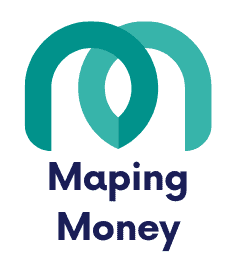5 Effective Cost Saving Strategies for Business
To boost your business's profitability, consider five effective cost-saving strategies. First, streamline operations with process mapping and automation, which can reduce costs by up to 50%. Next, enhance vendor negotiations by researching market trends and reviewing contracts, potentially saving 20% on procurement expenses. Integrate technology like cloud services to cut IT costs by around 30%. Invest in employee training, as cross-training can save labor costs by up to 30%. Finally, focus on energy efficiency through audits and smart technologies, achieving up to 30% savings. These strategies can transform your bottom line; there's much more to explore.
Key Takeaways
- Implement process mapping to identify bottlenecks and improve efficiency, potentially increasing productivity by 30%.
- Leverage vendor relationships and negotiate contracts regularly to achieve savings of 10-25% on procurement costs.
- Adopt cloud computing and automation technologies to reduce IT and operational costs by 30% and 20-30%, respectively.
- Invest in employee training and cross-training to enhance workforce flexibility and realize up to 30% savings in labor costs.
- Conduct energy audits and upgrade to energy-efficient equipment to achieve savings of up to 30% on energy expenses.
Streamlining Operations

As you seek to enhance your business's efficiency, streamlining operations should be a top priority. By employing process mapping, you can visualize workflows, revealing bottlenecks and opportunities for process improvement. This approach could potentially increase efficiency by up to 30%, directly impacting your bottom line. Implementing lean manufacturing methodologies allows you to reduce waste, with many companies reporting operational cost savings of 20-40%.
Automation also plays a vital role in this strategy. By automating repetitive tasks, you can reduce labor costs by up to 50%, freeing your employees to engage in higher-value work that drives growth. Additionally, regularly reviewing performance metrics, such as cycle time and error rates, can lead to continuous improvements, boosting overall productivity by 25%.
Utilizing data analytics to track key performance indicators empowers you to make informed decisions. This data-driven approach can result in a 15% reduction in operational expenses. By focusing on these strategies, you not only improve efficiency but also create a sustainable framework for long-term cost savings, giving you the freedom to reinvest in your business and explore new opportunities.
Vendor Negotiations

Enhancing operational efficiency sets the stage for more effective vendor negotiations. By strategically managing supplier relationships, you can considerably improve your purchasing power and achieve cost reductions. Here are three key strategies to evaluate:
- Research Pricing Trends: Conduct market research to understand current pricing trends. This knowledge can help you negotiate better terms, potentially saving up to 20% on procurement costs.
- Leverage Relationships: Cultivating long-term relationships with key suppliers often results in preferential pricing and priority service. Suppliers are more likely to offer better prices if they recognize your commitment.
- Review and Renegotiate Contracts: Regularly review your contracts to identify outdated terms. Many businesses discover cost-saving opportunities that lead to savings of 10% to 25% through renegotiation.
Additionally, exploring alternative vendors fosters competitive pricing, encouraging existing suppliers to improve their offers. This can yield an average cost reduction of around 10% across your supplier contracts. By implementing these strategies, you'll not only tighten your budget but also enhance your overall operational flexibility and freedom.
Technology Integration

Integrating technology into your business processes can greatly elevate efficiency and reduce costs. By investing in cloud computing, you can cut IT infrastructure costs by about 30%, allowing for scalability without heavy upfront hardware investments. This flexibility is essential for adapting to market demands while minimizing waste.
Moreover, implementing project management tools can enhance team collaboration and efficiency, with studies indicating a project completion rate improvement of up to 28%. This not only streamlines operations but also guarantees resources are used effectively.
Data analytics plays an important role in informing your decisions. Organizations that leverage data-driven insights typically see a productivity increase of 5-6%, making it easier to pinpoint areas for cost reduction.
Adopting robotic process automation (RPA) can further reduce operational costs by 20-30%, automating repetitive tasks and refining workflows. Finally, low-code platforms allow for rapid application development at a fraction of traditional costs, potentially saving up to 70% in development expenses.
Employee Training

Investing in employee training is a strategic move that can considerably boost productivity and reduce costs. By enhancing skills through effective training programs, you can achieve a reported 20% increase in productivity. Here are three ways employee training can save costs:
- Cross-Training: This increases workforce flexibility and can save you up to 30% in labor costs during peak periods by reducing the need for temporary hires.
- Online Courses: Embracing online training solutions can lead to an average savings of 60% on training expenses compared to traditional methods, making it a cost-effective option for employee development.
- Training ROI: Organizations investing in employee development see an impressive return of $4.53 for every dollar spent on training initiatives, highlighting the financial benefits of strategic training.
Moreover, fostering a culture of continuous improvement can lead to innovative cost-saving ideas, with 70% of companies reporting significant operational efficiencies from employee suggestions. By prioritizing employee training, you're not just cutting costs; you're simultaneously driving productivity and nurturing a skilled workforce ready to adapt to future challenges.
Energy Efficiency

Achieving energy efficiency is a crucial strategy for businesses looking to reduce operational costs and enhance sustainability. By conducting energy audits, you can identify inefficiencies and discover efficiency opportunities that may save your business up to 30% on energy costs. Upgrading to energy-efficient equipment, like LED lighting and ENERGY STAR-rated appliances, can further cut energy consumption by 20-50% compared to traditional options.
Implementing smart building technologies, such as automated lighting and HVAC systems, optimizes energy usage based on occupancy and time of day, potentially leading to energy savings of 15-20%. Furthermore, encouraging remote work can greatly decrease facility energy consumption by an estimated 30%, as fewer employees in the office mean lower heating, cooling, and lighting needs.
Regularly monitoring utility costs and usage data helps you identify anomalies and guarantees that your energy-saving measures are positively impacting your cash flow. By focusing on these strategies, you can reduce overhead costs, improve your operations, and create a more sustainable business model. Consider performance-based incentives to motivate your team, and don't hesitate to implement Lean Manufacturing principles to further boost efficiency.







